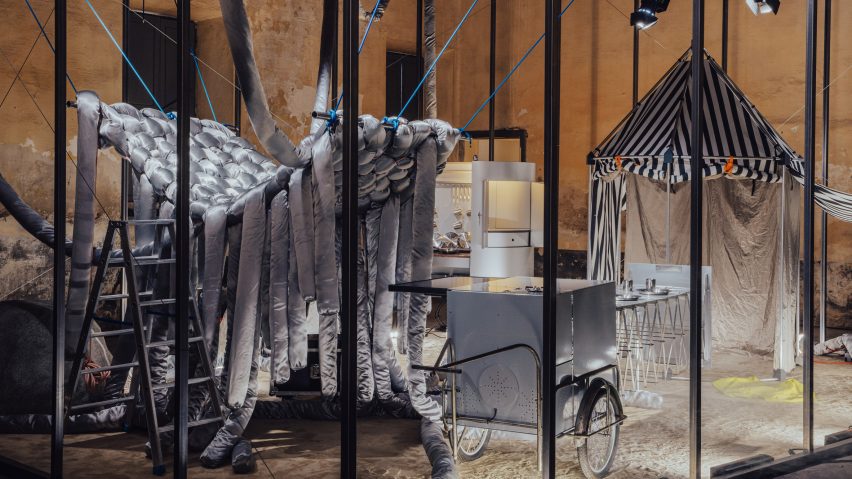
HEAD Genève illustrates post-apocalyptic future with nomadic aluminium furniture
Students at Swiss design school HEAD Genève have created an installation of speculative furniture design depicting a dystopian campsite at Alcova during Milan design week.
Designed by students at the Master of Arts in Interior Architecture (MAIA) at HEAD Genève, the installation was placed in an outbuilding at Villa Bagatti Valsecchi, a 16th-century villa that was one of design showcase Alcova's outposts during this year's Milan design week.
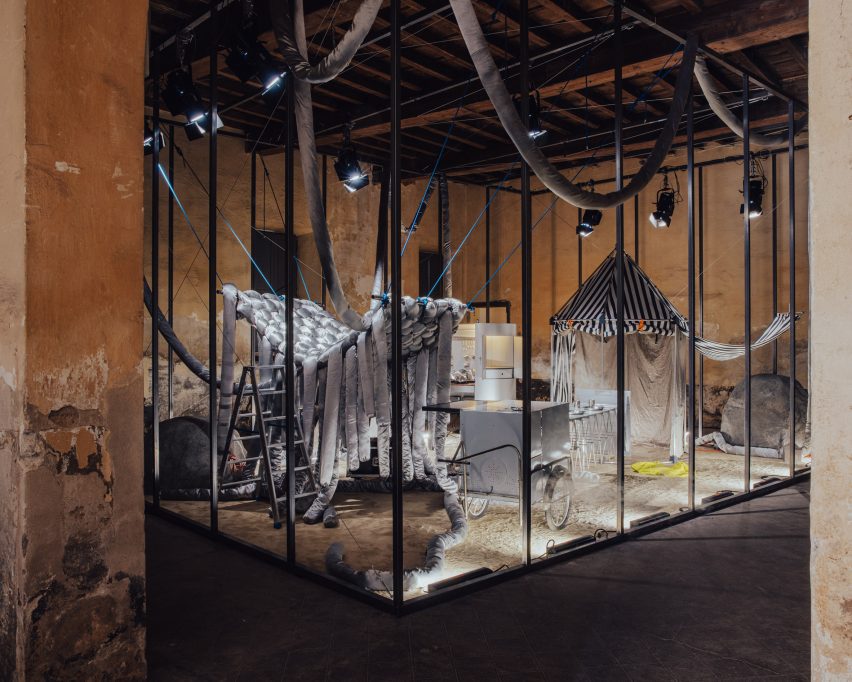
Called 2084, Diorama of the Future, the installation comprised a series of furniture making up a nomad camp, with pieces using resistant materials and found objects, with an aesthetic informed – somewhat ironically – by Romantic dioramas.
Tucked into a dark, plaster-and-wood-lined space in the villa's annexe, the installation was housed in a steel frame that suggested a glass box – a "vivarium", in the words of the exhibitors.
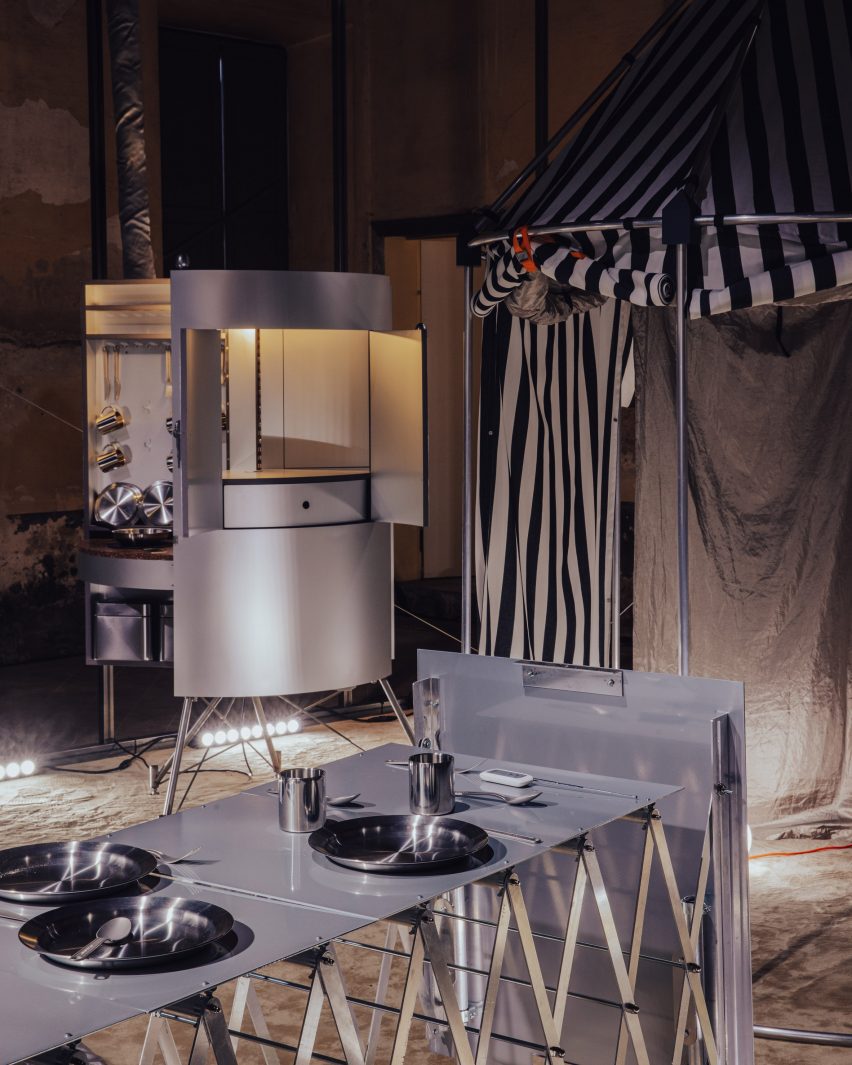
"While 19th-century dioramas presented romanticized visions of exotic natures behind glass screens that detached visitors from their complexities, Diorama of the Future inserts visitors right in front of damaged environments, calling for new ecosystemic actions," said the team.
"Within this large device, students will take on the role of inhabitants of this changing vivarium, whose evolution will problematize the relationship between representation, agency, and climate change."
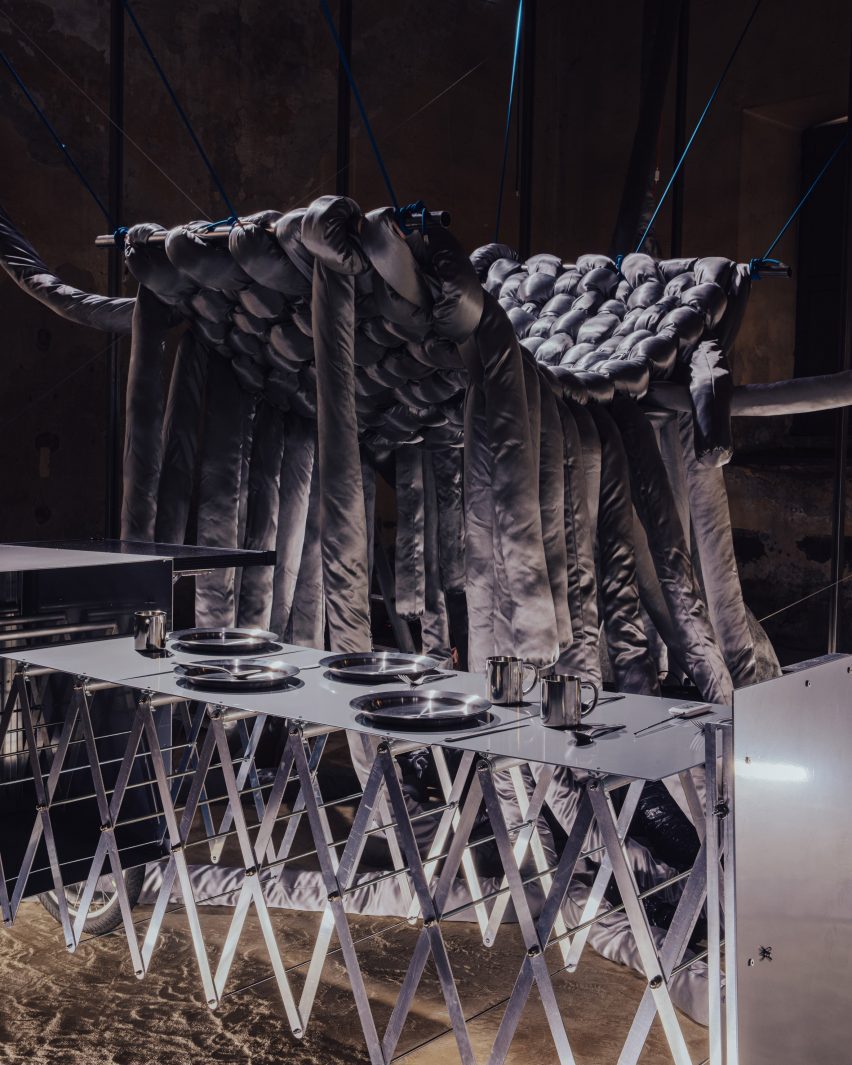
Lights were hung from the top of the steel frame and the ground of the installation was covered in fine sand, suggesting a depleted world.
The catalogue produced for the exhibition mentions that the inhabitants of this speculative world were driven to the road by climate change and catastrophe and "condemned to a bygone form of nomadism" in search of resources in a devasted world.
However, far from a depiction of pure necessity, the pieces in the installation were playful, such as an elaborate sleeping "tent" made from woven tubing covered in aluminium fabric and designed to function both as a hammock and as a shelter.
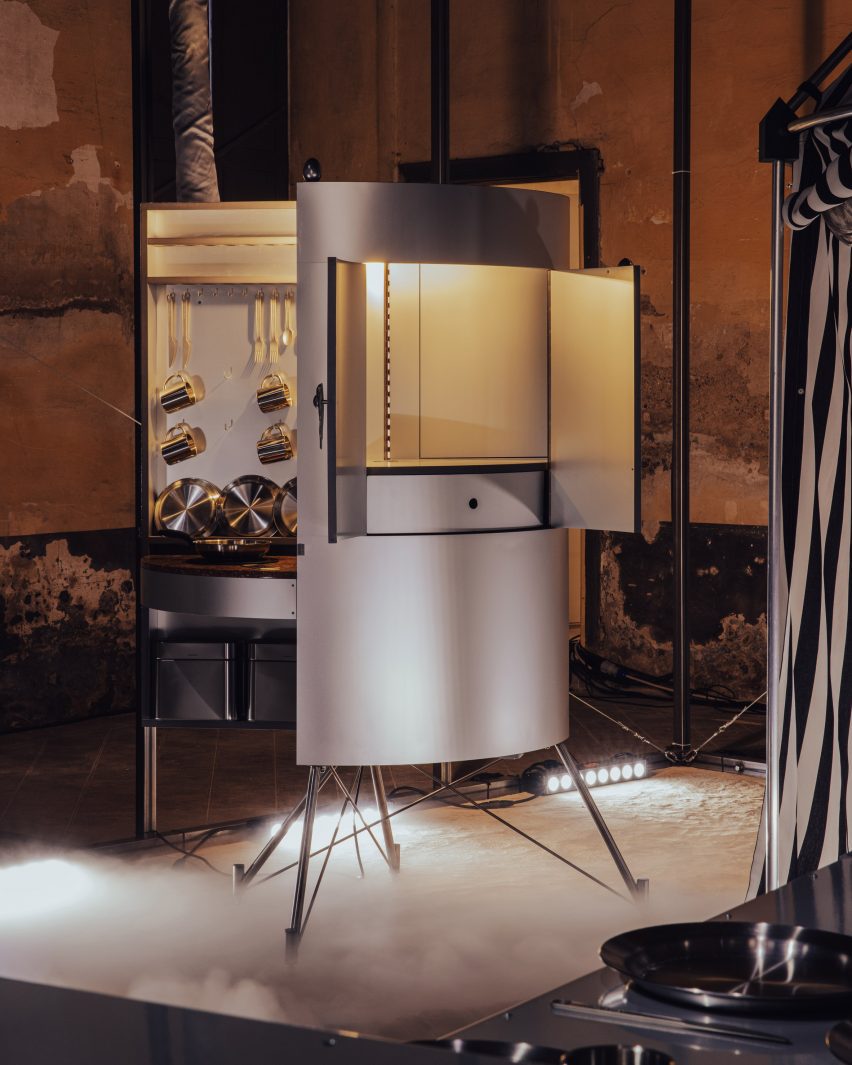
The aluminium was chosen for its durability and ability to shelter the inhabitants of the camp from radiation, and was also used in a privacy tent that consists of a circus-like fabric dropped over aluminium fabric and supported by metal poles.
Also included was a collapsible kitchen and dining set, consisting of a cart with bicycle wheels and a table that expands out.
All of the pieces were designed to be mobile and resistant to the potentially hostile climate.
The exception was a "treat" cabinet with a rocket-like shape and wooden surfaces. It was conceptualised as a "trap" set by companies trying to lure in escaped workers, dropped into the environment via rocket by a powerful group.
During its presentation, the installation featured smoke machines, a score and featured an intermittent performance illustrating what life in such a world might look like.
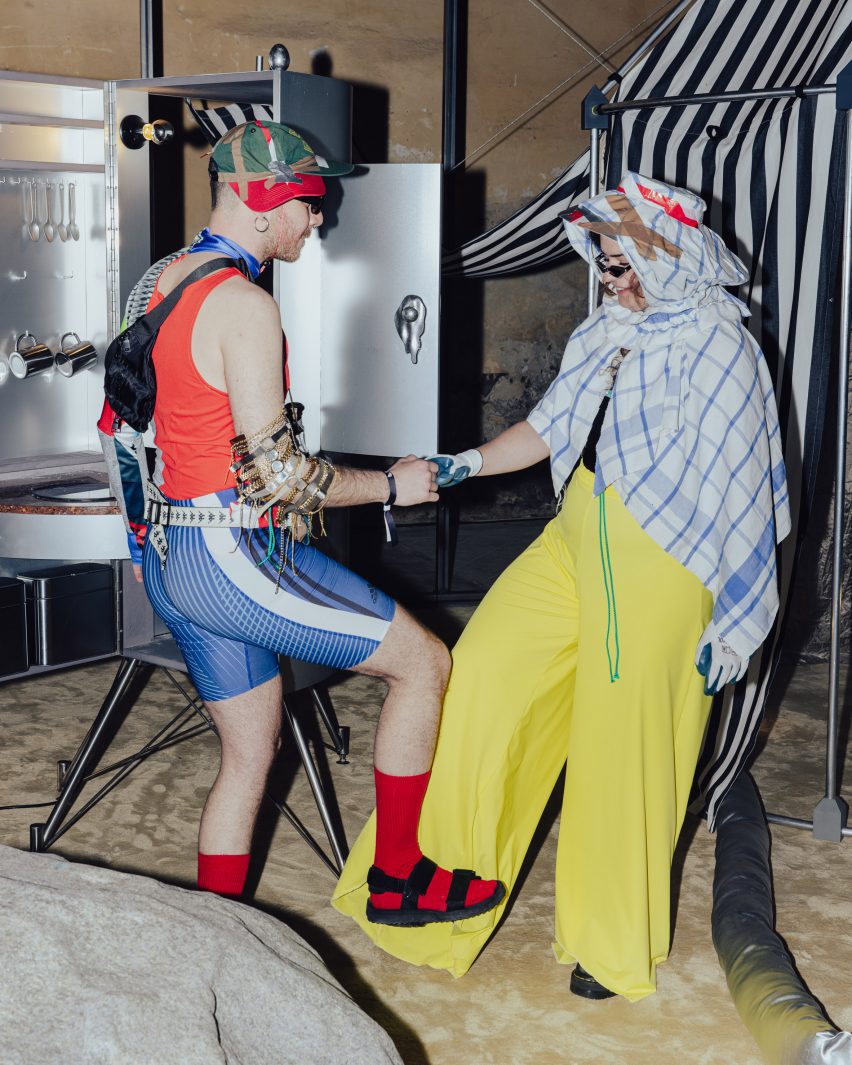
Other projects at Alcova included a collection of chandeliers by Canadian lighting company A-N-D placed on the ground in the main house of Villa Bagatti Valsecchi.
Dystopian themes have been used in other student work. Dezeen rounded up seven projects depicting architecture projects in dystopian cities.
The photography is by Piergiorgio Sorgetti.
Milan design week took place from 15 to 21 April 2024. See Dezeen Events Guide for an up-to-date list of architecture and design events taking place around the world.
Project credits:
Student designers: Ségolène Davister, Andreas Laskaris, Natalia Krymskaya, Alexandra Miskufova, Valentina Pantalena, Marie Schild, Marie Torrione
Faculty advisors: Youri Kravtchenko, Cécile-Diama Samb, Shizuka Saito, Dany Champion
Graphic design: Studio Nüssli+Nuessli
Technical team: Charles Cuccu, Adrien Cheneviére, Xavier Plantevin
Performance director: Natacha de Oliveira
Sound: Misha Hering
Costume: Marc Eicher
Choreography: Salomé Zielhi